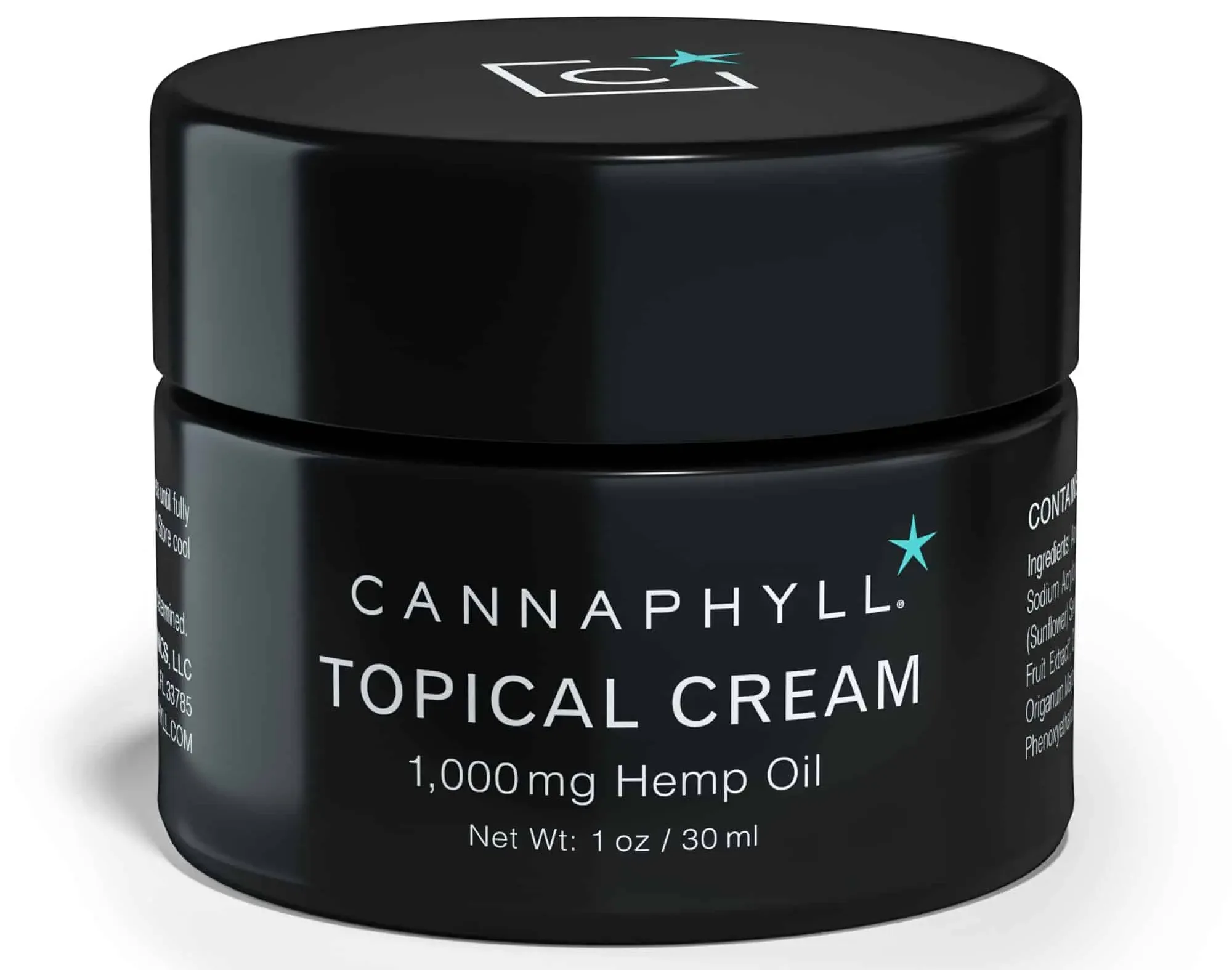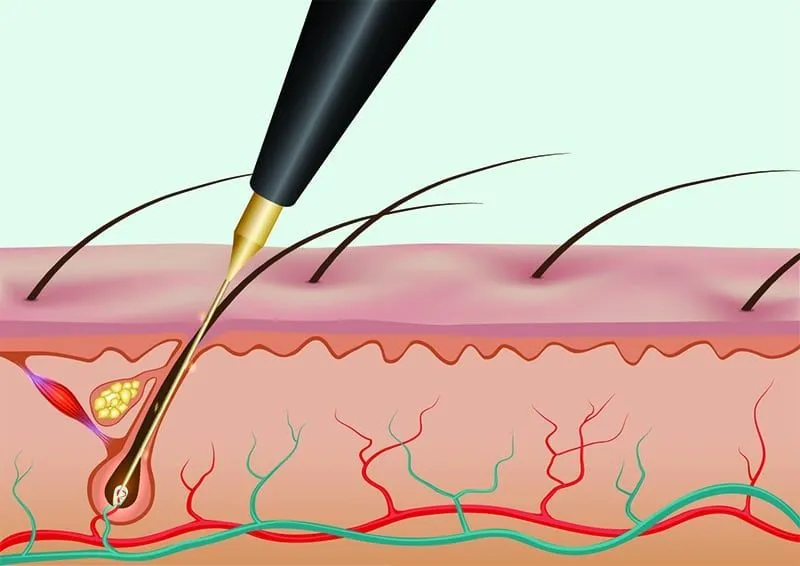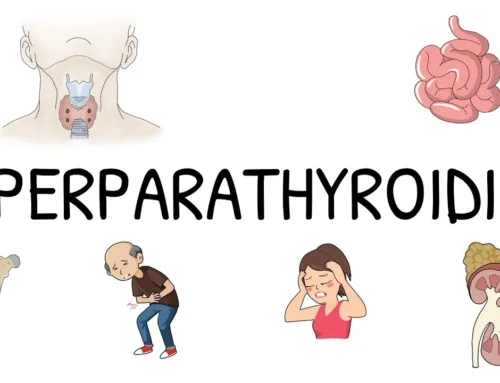Hirsutism is a common problem faced by women with polycystic ovarian syndrome. It is characterized by excess hair growth in the face and body. This can be very uncomfortable for women, affecting their confidence level.

What is Hirsutism?
Hirsutism is the presence of excessive hair in a male pattern on a woman’s face and body. It’s caused by an excess of male hormones, which can be triggered by polycystic ovary syndrome (PCOS). PCOS is a condition that affects one in 10 women worldwide, causing irregular periods, acne, and weight gain, as well as hirsutism.
Symptoms of Hirsutism
Hirsutism is when excess hair grows on the face and body. It is most commonly seen on the upper lip, chin, cheeks, and chest. Sometimes, hirsutism may also be present in other body parts, such as the back or abdomen.
It affects women with polycystic ovary syndrome (PCOS) more than others because it’s caused by high levels of male hormones called androgens in your body. Hirsutism can make you feel self-conscious about your appearance or even embarrassed if people comment on how much facial hair you have!
Medication for Hirsutism
-
Oral contraceptives.

Oral contraceptives are the most effective way to reduce hirsutism. They’re used to treat hirsutism, which is a common problem among women. There are different oral contraceptives, and they can be taken for as long as you need them. The pill isn’t a permanent solution; it just helps control your hormones so that you don’t grow excess hair on your face or body.
-
Anti-androgens.

Anti-androgens are used to treat hirsutism in women with PCOS. They can be taken orally or injected into the skin.
- Anti-androgens do not always work and may have side effects like weight gain or headaches. Due to PCOS, this makes them less effective than hormone therapy when treating hirsutism.
Topical cream

Topical cream is a good option to reduce hair growth. It contains anti-androgens, hormones that prevent testosterone from converting into DHT. This can help reduce your hirsutism symptoms, such as acne and unwanted body hair.
You can find topical creams over the counter at any pharmacy or drug store, but you should talk with your doctor before using one because some may interact with medications you’re already taking.
Procedures
Hair removal methods whose results last longer are also very helpful for individuals who are going through hirsutism.
-
Laser therapy

Laser therapy is a treatment that uses high-intensity light to destroy the hair follicles. The laser is applied to the skin using a handheld device emitting a beam of light.
Lasers can destroy black and white hairs on any part of the body, including the face, chest, back, abdomen, and legs. It works by targeting pigmented cells to damage them permanently without harming surrounding tissue or causing scarring.
-
Electrolysis

Electrolysis is a hair removal technique that uses a small needle to destroy the root of each hair. It’s sometimes called galvanic electrolysis or simply “electrolysis” for short.
Electrolysis sends an electrical current through each hair follicle, which causes them to die off and fall out over time. This process can take anywhere from six months to two years, depending on your growth rate and how quickly your body absorbs the chemicals used during treatment sessions–and it depends on how many sessions you need to achieve permanent results!
It’s important to note that this treatment isn’t painful; however, some people experience side effects such as swelling at the site where they were treated (which should go away within 24 hours).
-
Plucking

Plucking is the answer if you are looking for a quick and easy way to remove hair. However, this method has many drawbacks. For starters, it can cause ingrown hairs, resulting in pimples and rashes on your skin. Plucking also causes scarring, skin discoloration (dark patches), and thinning of the epidermis (the outermost layer of skin). It may even lead to permanent damage to your hair follicles if done repeatedly over some time without proper care.
-
Shaving

Shaving is a quick and easy way to remove unwanted hair. You can do it at home with a razor, in the shower, or on dry skin afterward. It’s also effective on any part of your body: legs, underarms, and even face (if you want to get rid of that stubble).
-
Waxing.

Waxing is a popular method of hair removal. It can remove the coarse body and fine facial hair, such as the mustache or chin hairs, that some women with PCOS may develop. Waxing is more effective than shaving at removing coarse body hair because it pulls the hair out from its roots rather than cutting it off at the surface of your skin.
Waxing also tends to cause less irritation than depilatory creams or razors. However, some people may find that waxing causes ingrown hairs if they have sensitive skin or use too much pressure when pulling away from their bodies during application (this can lead to broken follicles). If you’re worried about this happening, try applying baby powder before applying warm wax; this will help lift any loose hairs so they don’t get stuck under new ones after being pulled out by hot wax!
If you’ve got sensitive skin and want something gentler than hot waxes–which come in liquid form–try using soft-touch depilatory creams instead! They’re designed specifically for sensitive areas like armpits/groin regions where regular shaving might irritate already inflamed areas further due to constant rubbing against clothing during daily activities such as sitting down while wearing jeans/pants/skirts, etcetera…
-
Bleaching

Bleaching is a process in which the skin color is changed. It can be done with the help of bleaching creams, lotions, gels, and soaps, which contain active ingredients like hydroquinone (H.Q.) and kojic acid that help lighten your facial hair. Bleaching is also used to lighten the skin color.
Prevention for hirsutism
Here are some tips to help you prevent hirsutism:
- Stress, alcohol, and smoking can cause your body to produce more testosterone, which can trigger hair growth in unwanted places. So try to avoid these things to keep your skin smooth and hairless.
- Exercise regularly – it will help reduce stress levels and improve circulation throughout your body, which helps reduce acne breakouts on your face and unwanted facial hair growth (as well as other parts of the body).
- Eat a healthy diet – get enough protein from lean meats like chicken breast or fish but don’t eat too much red meat because it’s high in saturated fat that could lead to clogged arteries over time; also make sure there’s enough fiber in what you eat so that waste doesn’t build up inside of pipes under skin surface capillaries leading blood vessels supplying oxygenated blood needed by follicles containing dormant cells called melanocytes responsible for producing melanin pigment responsible for coloring both skin surface cells called keratinocytes plus hairs growing outwards into sunlight reaching eyesight range where light rays strike surfaces reflecting back towards retinas sending signals through optic nerves back into brain centers responsible for processing visual information relayed back down nerves connecting them together forming circuit connections between two sides while simultaneously closing off any remaining open channels allowing current flow only one direction thus preventing leakage through stray currents leaking outwards into surrounding areas causing damage elsewhere disrupting normal function causing malfunctioning systems within complex organisms.
Conclusion
Hirsutism is a condition that affects many women. It cannot be very comfortable, but there are many ways to treat it. The best way to prevent hirsutism is by keeping your skin clean and moisturized so that new hair does not grow on unwanted body areas, like the face or chest.




Leave A Comment